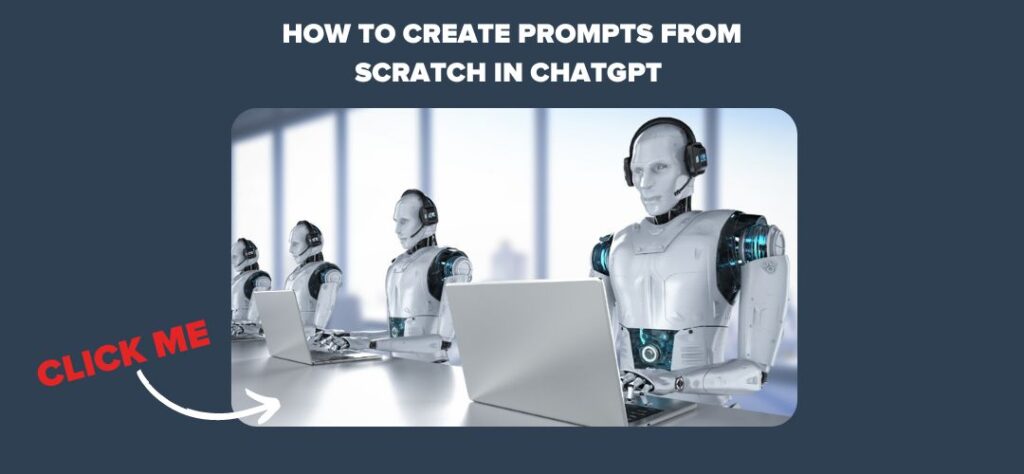Are you struggling to make your AI-generated content feel as engaging and relatable as content written by a human? You’re not alone. Many content writers and marketing managers face this challenge. AI has become an essential tool for generating content efficiently, but often, the output lacks the human touch that resonates with readers.
At this crossroads of technology and human creativity, it’s essential to bridge the gap. As someone with extensive experience in content creation and a deep understanding of AI tools, I know the frustration of trying to make AI content more human-like. But here’s the good news: it’s entirely possible, and I’m here to show you how.
In this article, you’ll learn practical techniques to humanise AI content. We’ll explore the limitations of AI, discuss specific strategies like asking ChatGPT to write in the tone of a famous person, using Custom GPTs with detailed instructions, and more. By the end, you’ll have a toolkit of methods to transform your AI-generated content into pieces that truly connect with your audience. Let’s dive in and unlock the potential of humanised AI content.
Understanding the Limitations of AI Content
AI-generated content has come a long way, but it still faces significant challenges in replicating the subtleties of human communication. Understanding these limitations is the first step towards effectively humanising AI content.
Inherent Limitations of AI in Capturing Human Nuances
- Lack of Emotional Depth: AI can process and generate text based on vast amounts of data, but it lacks the genuine emotional intelligence that humans possess. This means AI often struggles to capture and convey the emotional depth that makes content truly engaging.
- Contextual Understanding: While AI can understand context to a certain degree, it often misses out on the nuances that a human writer would naturally pick up. This can lead to content that feels off-base or disconnected from the reader’s real experiences.
- Creativity and Originality: AI is excellent at generating content based on patterns and examples it has been trained on, but it lacks the true creativity and originality that comes from human imagination. This can result in content that feels formulaic or generic.
- Cultural Sensitivity and Relatability: Understanding cultural references, idioms, and the subtleties of language is something humans excel at. AI, on the other hand, may produce content that lacks cultural sensitivity or fails to resonate with specific audience segments.
Recognising these limitations helps in setting realistic expectations and forming a strategy to enhance AI content. In the following sections, we will explore practical techniques to overcome these challenges and bring a human touch to your AI-generated content.
Techniques for Humanising AI Content
Now that we understand the limitations of AI in generating truly human-like content, let’s explore practical techniques to bridge the gap. These methods will help you enhance the relatability and engagement of your AI-generated content.
1. Asking ChatGPT to Write in the Tone of a Famous Person
One effective way to humanise AI content is by asking ChatGPT to emulate the tone and style of a well-known individual. This can infuse the content with a distinctive voice that resonates more deeply with readers.
Example Prompt: “Write a blog post introduction in the tone of Ernest Hemingway, discussing the importance of storytelling in marketing.”
This prompt helps guide the AI to adopt Hemingway’s concise, impactful style, making the content more engaging and memorable.
2. Using Custom GPTs and Providing Extensive Instructions
Custom GPTs allow you to tailor the AI’s behaviour and output to better fit your needs. By providing detailed instructions, PDFs, and other materials, you can train the AI to produce content that aligns more closely with your desired style and tone.
Here’s a complete guide on how to build Custom ChatGPT bots.
Read: How Building a Custom ChatGPT Can Save You +20 Hours Every Week
3. Editing and Refining AI Output
AI-generated content often requires human intervention to reach its full potential. By editing and refining the output, you can add the necessary human touch to make it more relatable and engaging.
Editing Tips:
- Adjust Tone and Voice: Ensure the content matches the desired tone and voice of your brand or the specific piece
- Add Personal Anecdotes: Integrate personal stories or experiences to make the content more relatable
- Enhance Emotional Appeal: Modify language to evoke the appropriate emotions and connect with readers on a deeper level
Hot tip: You can ask ChatGPT to do all of the above things, which will help it sound more human. For example, you might say “Please include at least one anecdote in every section for this blog.”
4. Incorporating Storytelling Elements
Storytelling is a powerful tool in making content more human. By incorporating storytelling elements, you can transform AI-generated text into compelling narratives that captivate your audience.
You can achieve this by simply asking ChatGPT to do the following:
- Personal Stories: Include fake personal stories or experiences that help to prove the main point
- Descriptive Language: Use vivid descriptions to paint a picture and draw readers into the blog
5. Using Tone and Voice Adjustments
Fine-tuning the tone and voice of AI content can significantly improve its human-like quality. Adjusting these elements helps align the content with your audience’s expectations and preferences.
Tone and Voice Adjustments:
- Match Audience Preferences: Tailor the tone and voice to match what your audience prefers and expects. You need to make sure you’re giving ChatGPT instructions on the tone of voice you would like it to use
- Consistency: Ensure consistent use of tone and voice throughout the content to maintain a coherent narrative. Sometimes you’ll have to remind ChatGPT to stick to the tone, as it can sometimes forget
- Experimentation: Don’t be afraid to experiment with different tones and voices to find what works best with AI. Create a shortlist of your favourite writers, and test using ChatGPT with each
By applying these techniques, you can significantly enhance the human touch in your AI-generated content, making it more engaging, relatable, and effective in connecting with your audience.
So, What’s Next?
After having many discussions with others, I’ve discovered that the biggest reason most people fail at getting AI content to sound human is because they don’t do enough testing.
Remember, the biggest factor to your success in this space is how much experimentation you’re willing to do. The more you test, the more you’ll discover.
Start by experimenting with different tones and voices, incorporating storytelling elements, and refining AI outputs. Build a Custom GPT and test it. Then, change it, and continue testing.
This is a reiterative process, and if I wanted you to take anything away from this article, it would be just that. With practice and perseverance, you’ll find the perfect blend of efficiency and human touch in your content.
Next, check out our article on How to Create Prompts from Scratch in ChatGPT.














